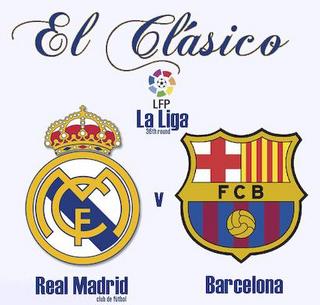


"En primavera la sangre es altera" or in English, "in the Springtime the blood is high and running". Most people utter these words when the weather starts to improve and the locals take to the streets to live "la vida loca" and forget about the monotony of the normal workweek. It's now April 25th, I think we can say the spring/summer festival season is underway. Carnivals, costumes, and most importantly, "vamos a bailar" ("let's dance"). In Spain, "las fiestas" (or the parties) are a deeply ingrained cultural mainstay that rejuvenates the soul of every person that participates in the merrymaking . There is a certain art to everything you do to prepare for a fiesta in Spain. Starting with preparing the food, sewing the costumes, and building the floats, all the way until the finish when the last sangria, churro, beer or tapa is tossed into the corner. Spain is famous for its fiestas because almost every Saint has a celebration replete with special foods and customs. Each city and town wants to recognize its historical importance with a production of some sort. I was lucky enough to spend the last few days at "La feria de abril" in Sevilla. Sevilla is the fourth biggest city in Spain and the Capital of Andalusia (one of the biggest communities). If you mention Sevilla to a Spaniard, almost always, the first cultural event that comes to mind is the "feria de abril" (the fair/carnival).
Every year, two weeks after their Holy week celebration (which is also famous), the citizens of the 4th biggest city of Spain spend a week partying on large fairgrounds, dancing traditional dances, eating with friends and most importantly, enjoying life and relaxing. It's one of a kind. Southern Spain is very different from the rest of Spain and especially from the North. When most people think of Spanish people and Spanish tourism, they imagine flamenco, tapas, bullfights, religious emblems, dark hair and dark eyes, olives, and lots of sun. "Los andaluzes" in Sevilla and all across the province as they are called are incredibly kind people. They are very open to international travelers and want outsiders to partake in their traditional dance and drink. They are passionate, excited, and animated. They speak "castellano" or "spanish" in a very unique way with an intensely strong accent in which they drop the "s" in words and shorten many common phrases. The truth is that many people have trouble understanding them. I can also be included in that group, however, it was "vale la pena" or worth it to put forth that extra effort to understand these people. I had to listen more carefully but their sounds make them unique. I could not fathom missing the chance to partake in this incredibly important culutural event because I was a bit nervous to practice my "andalu".
For 5-6 days, los sevillanos hang out in "casetas" or little houses that are actually elaborately decorated tents complete with bars and tables where different groups of people and societies (and organizations/businesses) or "socios" spend all year paying money to enjoy the benefits of these parties. Each street on the fairgrounds is named after a famous bullfighter and lights and other festive decorations are strung up all around so the "ambiente" or atmosphere is very pleasurable (even as it gets dark). Each party tries to be more elite than the other. Most people are dressed very elegantly in their "sunday best" and looking very "pijo" or "posh" which also adds to the atmosphere. I felt like I was in a movie. As an "extranjero" or foreigner, you mostly rely on obtaining an "enchufe" which literally means to be "plugged in" or "hooked up"(in other words, know somebody who knows another person who will let you come in) as a way of gaining entrance to this rockin revelry. It's all politics but the negotiations are worth it. And it's important to note that there are over 1,000 of these tents. Some serve copious amounts of food while others are more relaxed and look like the basement of your grandparents house. One thing remains the same, "las sevillanas" or the traditional flamenco dancing can be found in each and every one as well as some type of drinking or socializing. Basically, it's open drinking and eating in the fairgrounds for a week straight. People stay out partying until 8 or 9 AM in the morning, sleep for 5 or 6 hours and then do it all over again. With people drenched in sweat from the intense heat and heavy costumes along with the constant mix of drinking (a drink called rebujitos is the most commonly consumed; It's 7up and white wine) and dancing, the experience can be overwhelming. As I walked around, the smell of fried fish and gazpacho (a cold soup) made my mouth salivate. Every Spanish city has a festival. So bystanders may say, "it's just another party like we have here in our city but in a different part of Spain", however, I disagree. It's not everywhere you can see Men riding around on horses with their children dressed accordingly and then hop in a horse carriage ride while dancing flamenco and chugging sherry (refined white wine that comes from jerez de la frontera). If you want to experience Spain, go to the magical feria. If you didn't know, now you do..... OLE!!



No comments:
Post a Comment